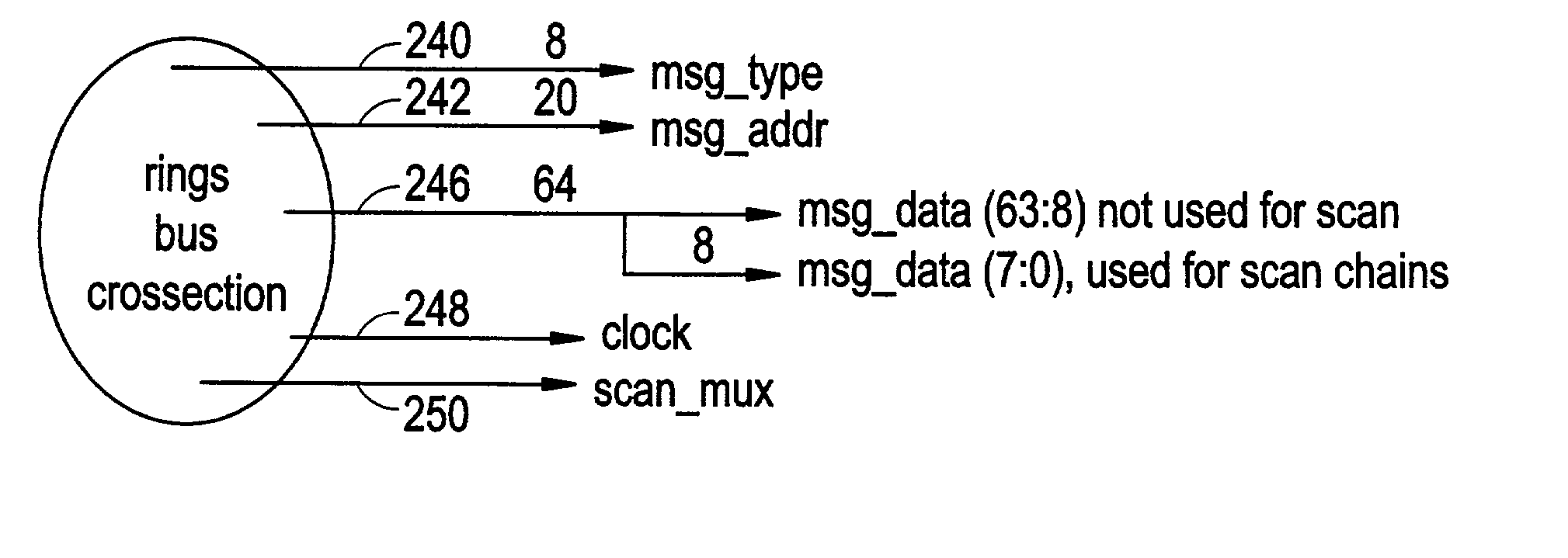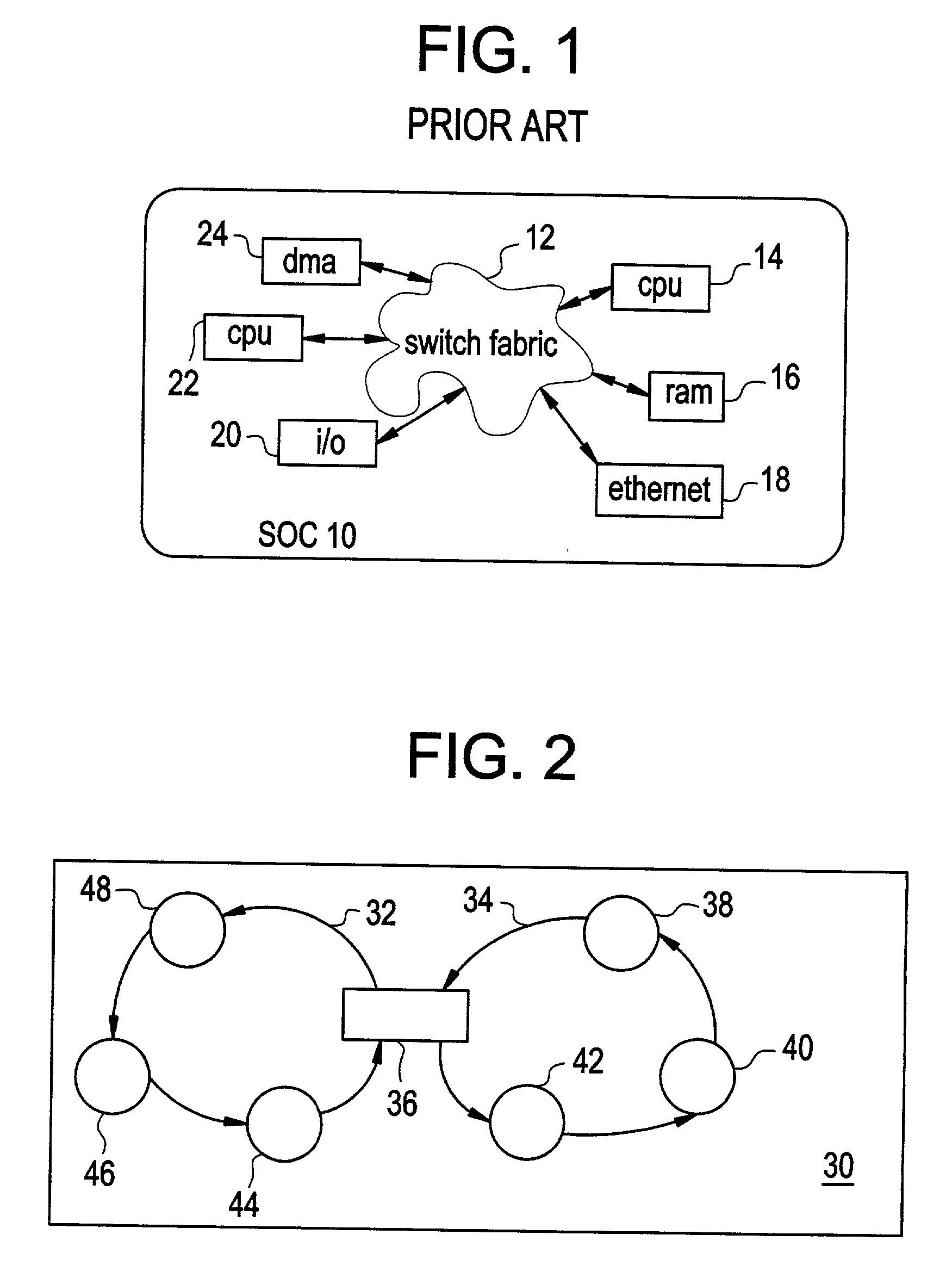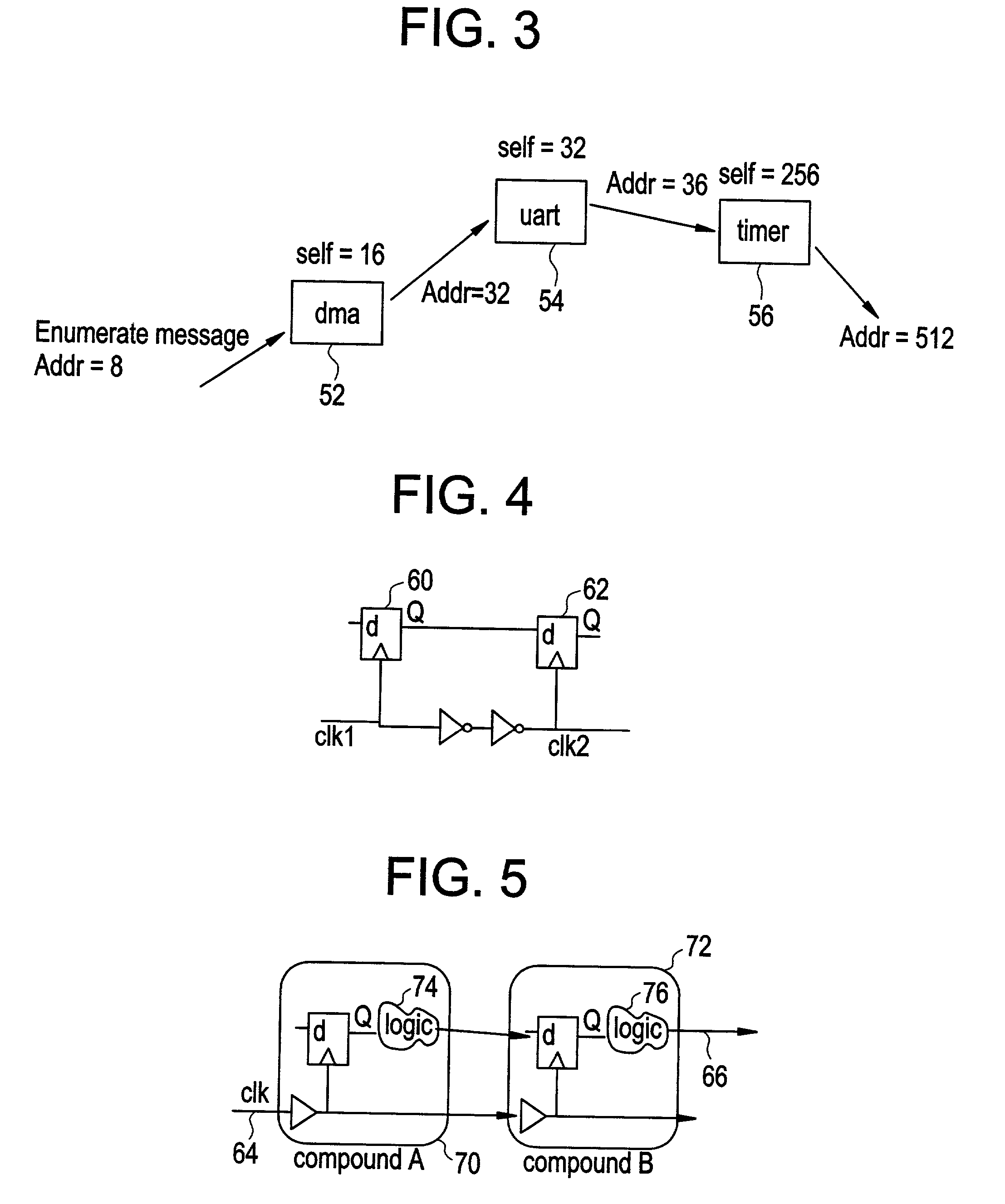Communications system using rings architecture
a communication system and ring technology, applied in the field of communication system using ring technology, can solve the problems of requiring a considerable overhaul of the system, unable to connect, and a large number of mechanisms needing to be debugged
- Summary
- Abstract
- Description
- Claims
- Application Information
AI Technical Summary
Benefits of technology
Problems solved by technology
Method used
Image
Examples
example b
[0858] Example B--calculating CRC on transmit data (multireader data out):
[0859] The CRC machine can calculate the CRC of the transmit data by snooping the S and L bits of the multireader output messages. The network processor initializes the CRC agent in the following manner:
[0860] (1) CRC type.
[0861] (2) A new residue if the current residue is to be overwritten. The data and the data size of the residue will be taken from the message data and type parts, respectively (the data part of the agent bus is ignored in the snoop mode).
[0862] (3) The operational mode must be set to work in the snoop mode, selecting the transmit data bus as a source for the data.
[0863] (4) One or two cycles after the last data has arrived at the CRC (depending on the number of valid bytes in the data, the CRC machine can calculate the CRC on 32 bits in one cycle) the network processor can read the CRC result.
example c
[0864] Example C--calculating CRC of receive data: The CRC machine can calculate the CRC of the receive data by snooping the S and L bits of the agent write bus messages. The network processor initializes the CRC agent as follows:
[0865] (1) CRC type.
[0866] (2) A new residue if the current residue is to be overwritten. The data and the data size will be taken from the message data and type parts, respectively (the data of the agent bus is ignored in the snoop mode).
[0867] (3) The operational mode must be set to work in the snoop mode.
[0868] (4) One or two cycles after the last data has arrived at the CRC (depending on the number of valid bytes in the data, the CRC machine can calculate CRC on 32 bits in one cycle) the network processor can read the CRC result.
[0869] Timer Agent 526
[0870] Referring now to FIG. 57, an exemplary embodiment of the timer agent 526 is illustrated in accordance with one embodiment of the present invention. The timer module is designed to allow the assignmen...
PUM
 Login to View More
Login to View More Abstract
Description
Claims
Application Information
 Login to View More
Login to View More - R&D
- Intellectual Property
- Life Sciences
- Materials
- Tech Scout
- Unparalleled Data Quality
- Higher Quality Content
- 60% Fewer Hallucinations
Browse by: Latest US Patents, China's latest patents, Technical Efficacy Thesaurus, Application Domain, Technology Topic, Popular Technical Reports.
© 2025 PatSnap. All rights reserved.Legal|Privacy policy|Modern Slavery Act Transparency Statement|Sitemap|About US| Contact US: help@patsnap.com



